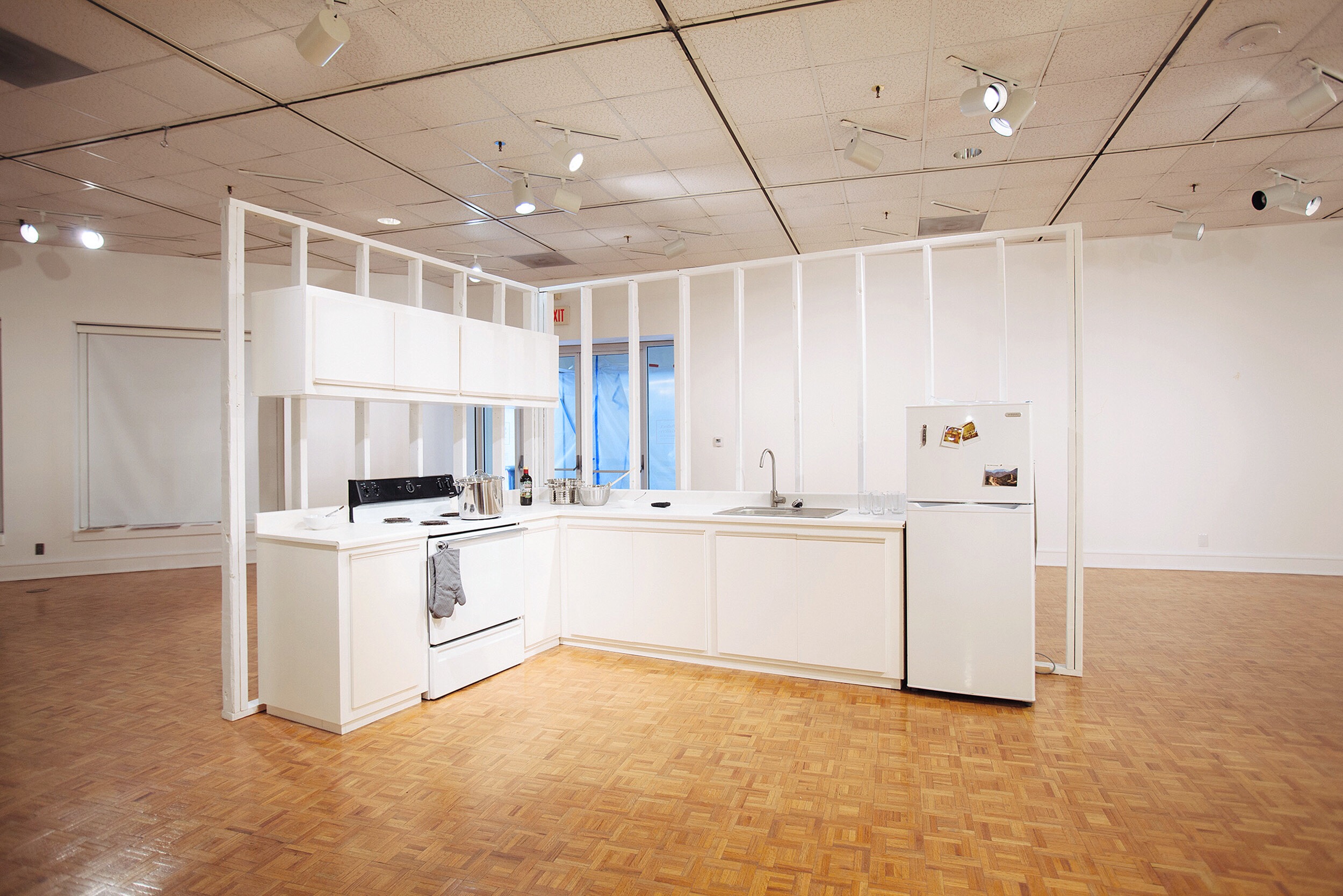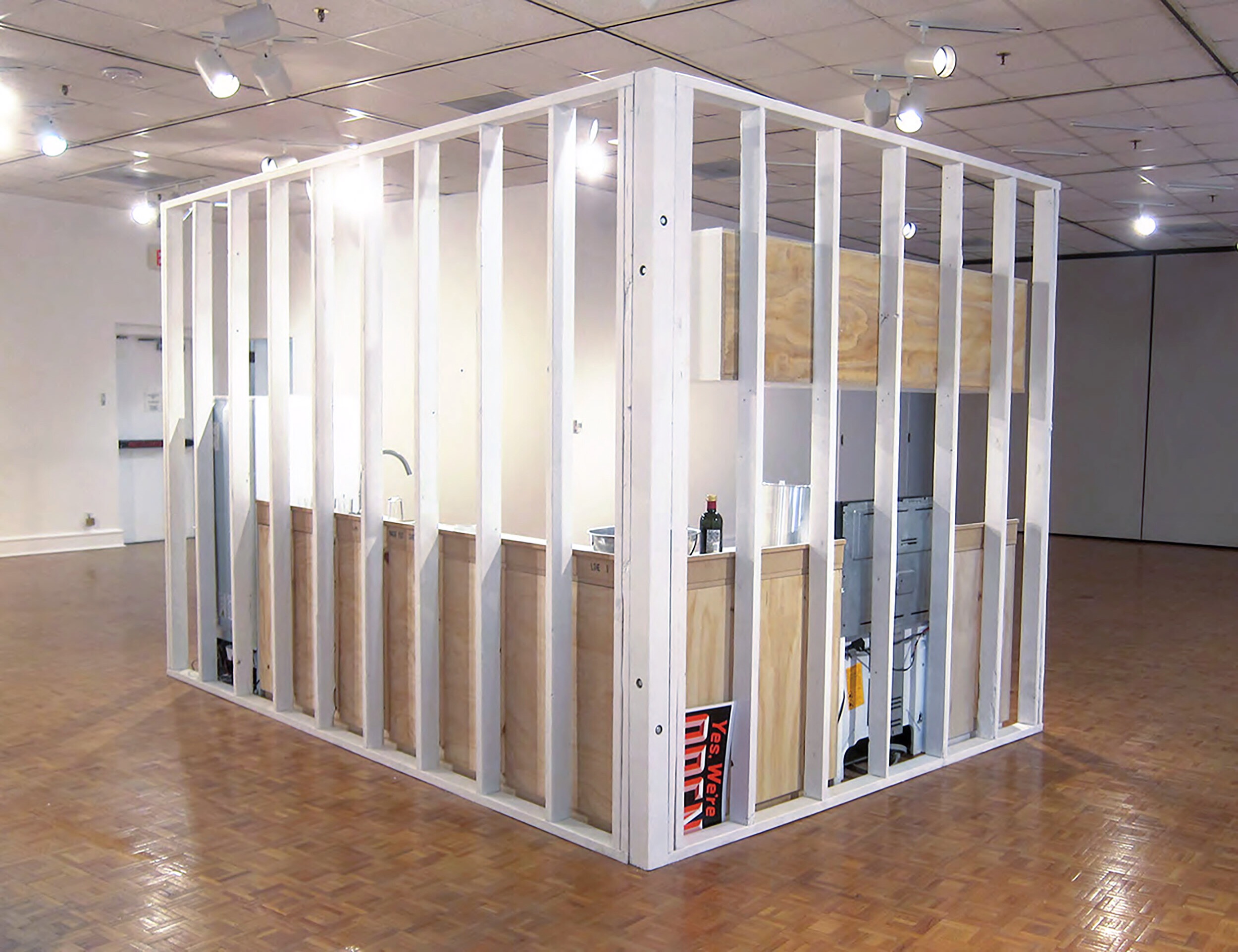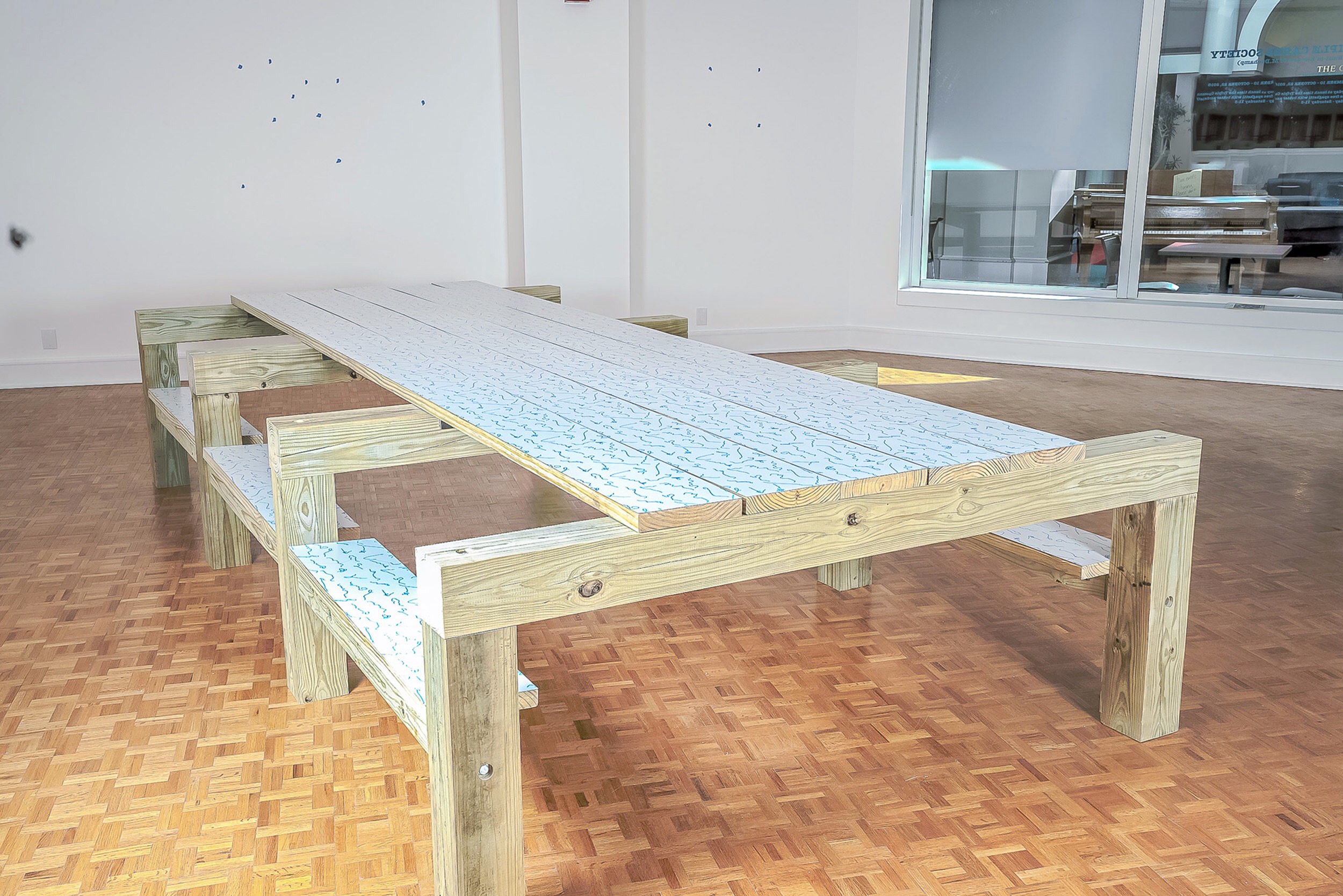Marco Bruzzone at SMU, Dallas. 2016
Triple Carbs Society
(The Built-in Kitchen of M. Duchamp)
It comes from my reading of Pierre Cabanne´s book Dialogues with M. Duchamp. In this book Robert Motherwell recalls from Duchamp’s time in New York City: “He frequently went to a little Italian restaurant, where he invariably ordered a small plate of plain spaghetti with a pat of butter and grated parmesan cheese over it.” Given his constant attempts to merge his own life with his art, M. Duchamp might have deliberately decided to eat that food every day as a performative act and also as a ready-made. I became fascinated by how this white meal he introduced into his body every day was deconstructed and how it became part of his body, his nervous system, his ideas, and eventually, his art. How such a minimal monochromatic meal could be reconstituted as a complex and colourful set of ideas and forms and relationships.
In Triple Carbs Society (The Built-in Kitchen of M.Duchamp) I re-enact that meal. To do so, I´ve exhibited a ready-made called the Built-in Kitchen of M. Duchamp. It´s a fully functioning, built-in kitchen that is displayed in the gallery space without any walls hiding and supporting its back. Instead a simple grid t lets the viewer see it from every corner, almost like one of the 3-D models people are confronted with when buying a kitchen online. The built-in kitchen is the center of family life, the hope of a custom-made space where life begins during every meal. Watching this sculpture the viewer has the possibility to dissect this space and see it out of its normal context for what it truly? is. The exhibition is open only at lunchtime and offers the students, employees of the SMU, and any other interested people the possibility to have a free plate of plane spaghetti with butter and cheese. The students of the SMU are in charge of preparing this meal and performing this Duchampian action. When the pasta is ready, a noodle is thrown against a wall (getting stuck to it) to test its readiness. I´ve made signs on the walls so that the students know where to aim, building in that way a gallery of minimal drawings produced in a seemly action-painting modality. One wall has only a noodle in the middle, another one a diptych, another wall a series of noodles displayed as a portrait, and anothero, as an “eclectic group.” I´m fascinated by the way noodles stick to the wall. At first glimpse they might remind the viewer of a doodle, but the tension and elasticity of the gluten and the different way the parts of the same piece stick to the wall make a unique form every time. To provide a space to eat I´ve built a replica of Donald Judd´s Picnic Table. I saw this big bulky design for the first time in Marfa. It´s functional and able to host a lot of people as well as being able to display large objects on its surface. It´s ideal for big meals or communal work. It also carries a strange military style (maybe the Marfa oneNB: I dont understand––the Marfa military?), so to make it more suitable for such a convivial environment I produced a new laminate called Noodle-Doodle that covers the surface of the table and the built-in benches. The pattern is made by throwing 31 strands of spaghetti on the wall, photographing them and re-tracing them in full cyan. Finally the laminated sheets have been sponsored and produced by Abet Laminati, the historical company who produced works for E.Sottsass, Memphis Group, Joe Colombo, Superstudio, etc… Inside the Built-in kitchen a small curated exhibition is taking place (recalling the curated exhibitions in the kitchen of Raymond Duchamp-Villion) with small art-works by Federico Maddalozzo, Melissa Dunn, Karl Holmqvist, Arvo Leo, Klara Liden and Eivind Nesterud.















